While much of the past year has been marked by uncertainty, many accounting and financial services firms have found new ways to not only navigate uncharted waters but to grow at accelerated rates. Findings from the new High Growth Study 2022, Accounting & Financial Services Edition, reveal specific trends in the industry and 4 key advantages that are propelling high-growth firms ahead of the competition.
For more than a decade, Hinge has been researching the fastest growing and most profitable firms across multiple professional services industries—analyzing the very latest and most effective marketing and business development strategies. As part of this year’s annual study, 427 Accounting & Financial Services (A&FS) firms participated, representing nearly $65 billion combined revenue and more than 220 thousand employees. A&FS firms of all sizes participated and accounted for 22% of the overall study.

While the majority of participants do business in the United States (64%), the study also includes a diverse global representation.

Strong Growth Despite a Disruptive Year
Accounting & Financial Services moved into the third spot this year in growth, up from last place the prior year (when they had a 9.3% median growth rate). The Technology & Software industry remained the growth leader again this year.
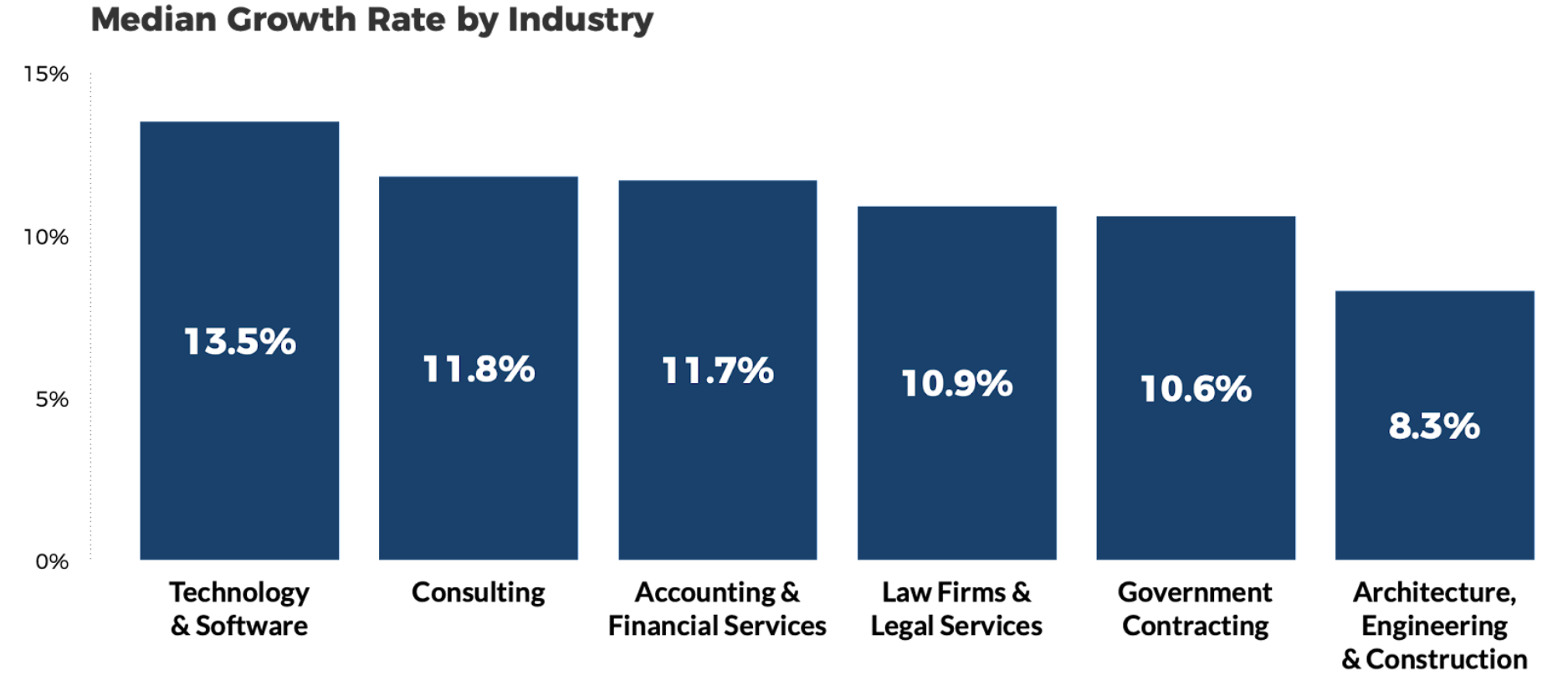
The Consulting industry also increased proportionally (up from 9.5% last year) —suggesting a market appetite for advisory and consulting services as businesses looking to grow in a disruptive and changing environment seek reputable partners to provide strategic guidance.
Last year saw a surge in online leads, driven in large part by the pandemic. Accounting & Financial Services continued to progress, increasing its digital lead generation by nearly 19%. While the shift toward digital marketing techniques continues, more opportunity is still at hand. Both the Legal Services and Technology & Software industries generate an even greater proportion of leads from digital sources.
Top Concerns
While the uncertainty and anxiety of 2021 have moderated somewhat, the need for new skills remains A&FS firms’ top concern. Meanwhile, the shortage of top talent has jumped into the No. 2 spot (up from the 7th position in last year’s study).
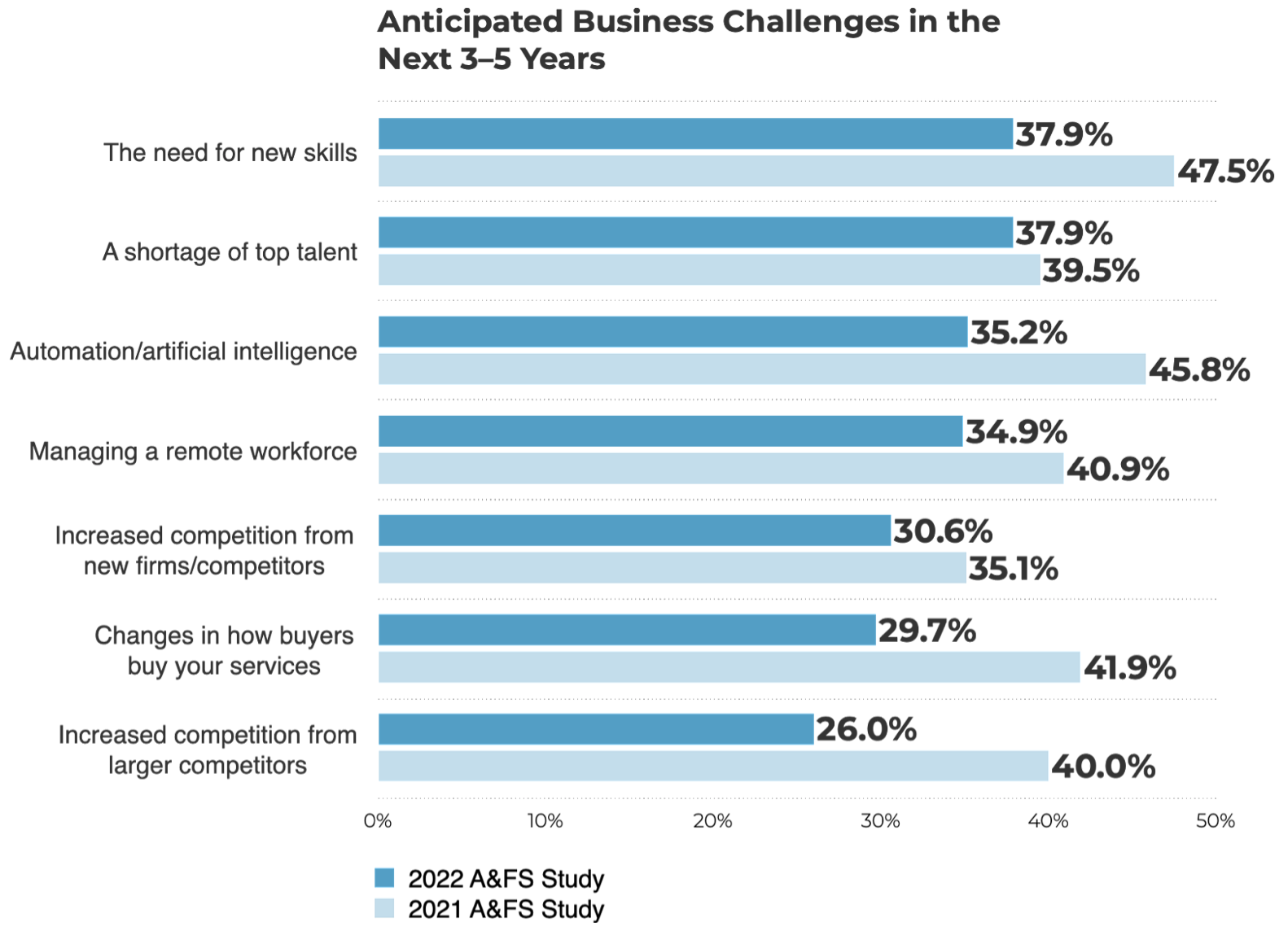
Combined, these two priorities illustrate the continued stress on the industry of a shrinking talent pool—a situation exacerbated by the current social and economic shifts the media has dubbed The Great Resignation.
Growth AND Profitability
While the Average Growth firms in the industry did well, the High Growth firms surged in top-line revenue with a median growth rate of 30%. High Growth firms are defined as having a compound annual growth rate of 20% or greater over a three-year assessment period.
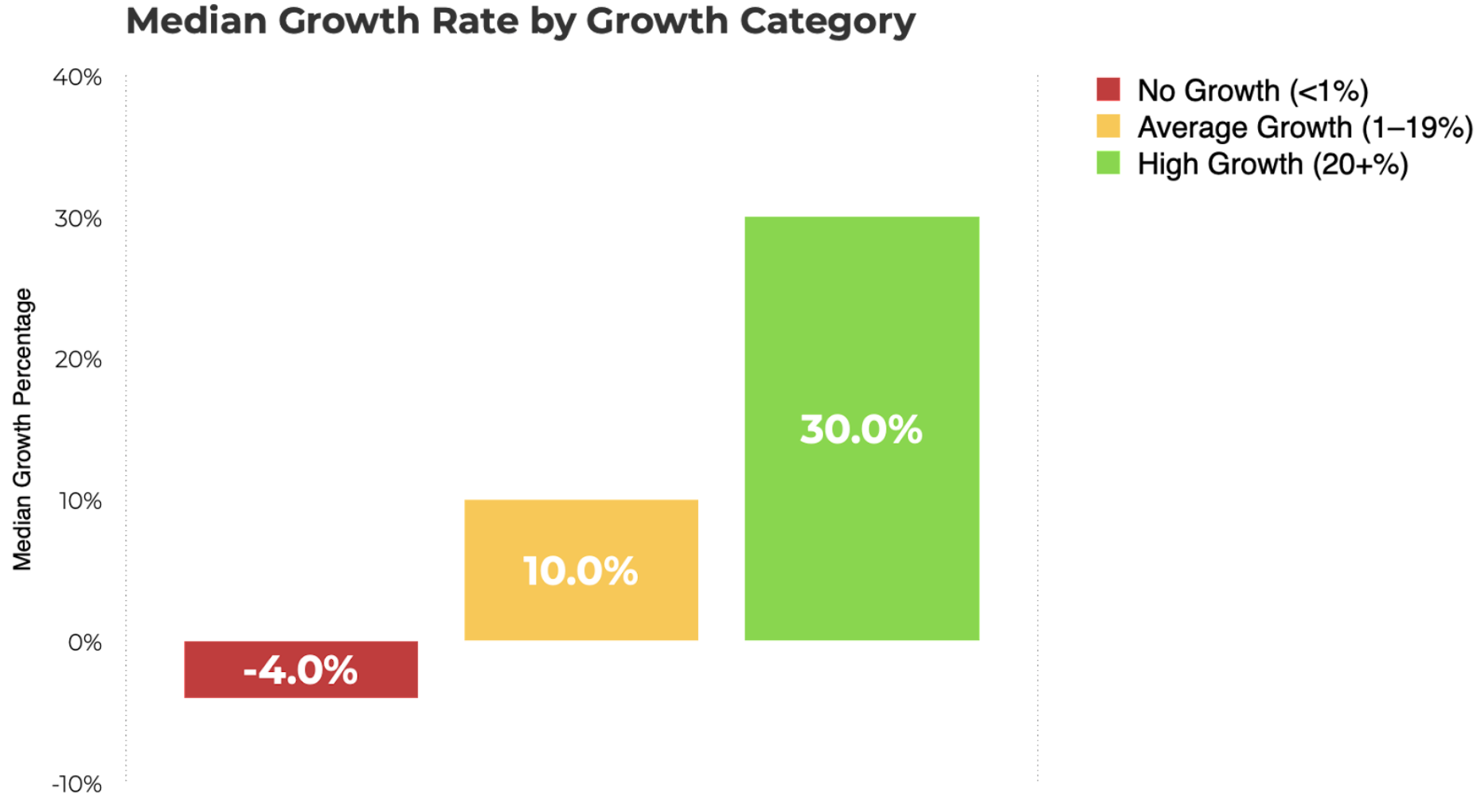
High Growth firms not only grow faster, but they are also much more likely to be highly profitable. A common perception that rapid growth diminishes profitability does not seem to be the case. Compared to their No Growth counterparts, A&FS High Growth firms generated profits that were 14.2% higher.
High Growth firms come in all sizes, but there are some sweet spots. We found in the new High Growth Study 2022, Accounting & Financial Services Edition, high-growth firms benefited from 4 key advantages: Talent, Technology, Marketing, and Strategy.
Key Advantage 1: TALENT
Even before the pandemic, there were already bleak forecasts of a shrinking talent pool and tales of a shortage of highly-skilled professionals so extreme that job candidates would dictate their own salary, benefits, hours, and even their own work environment. Fast forward just a few short years, and that prediction has become reality. No matter how the latest headline reads … The Great Resignation, The Big Quit, or The War for Talent … the fact is that firms are scrambling to find real and authentic ways to connect with employees’ top concerns and create cultures with lasting appeal.
We have found that in addition to hiring skilled talent, A&FS High Growth firms are more likely to work with outside agencies, firms, and freelancers to ensure marketing needs are being met. While traditional services such as website improvements and marketing materials top the list, High Growth firms also partner with providers who thoroughly understand their industry and have the established expertise to implement new strategies and techniques for growth.
High Growth firms don’t simply outsource projects. As we can see in the chart below, they proactively develop hybrid teams for quick access to specialized skills such as SEO, coding, video production, copywriting, and research—valuable skills that complement in-house teams. What they don’t do is defer business development due to a lack of talent or skills.

Key Advantage 2: TECHNOLOGY
High Growth A&FS firms are accelerating their use of technology at a faster pace. From core business processes to marketing automation and business development functions, they are evolving mature operations that power growth and profitability.
One of their biggest advantages is a much higher adoption of Customer Relationship Management (CRM) systems. A well-implemented CRM system can provide the single biggest advantage in leveraging technology. But purchasing the software isn’t enough. Successful implementation includes proper training, ongoing optimization, and systems integration to maximize the full benefits.

High Growth firms are also more likely to use more sophisticated reporting to track month-over-month and year-over-year trends to evaluate the success of online campaigns and make informed business decisions. Sadly though, many A&FS firms are not tracking any marketing metrics. Access to accurate real-time data is one of the keys to higher levels of profitability.

Growth-oriented firms are actively innovating by automating and systematizing their own business processes—as well as helping their clients do the same. By expanding their digital capabilities and advisory services, A&FS firms position themselves to provide sophisticated, high-value strategic services. In addition, their marketing teams have more access than ever to analytics and reporting to inform crucial data-driven business decisions.
Key Advantage 3: MARKETING
While overall marketing budgets remain elevated across the board, High Growth firms made substantially higher investments in marketing in order to drive growth and profitability. High Growth firms not only invest more of their resources in marketing, but they also invest in different marketing activities than No-Growth firms.
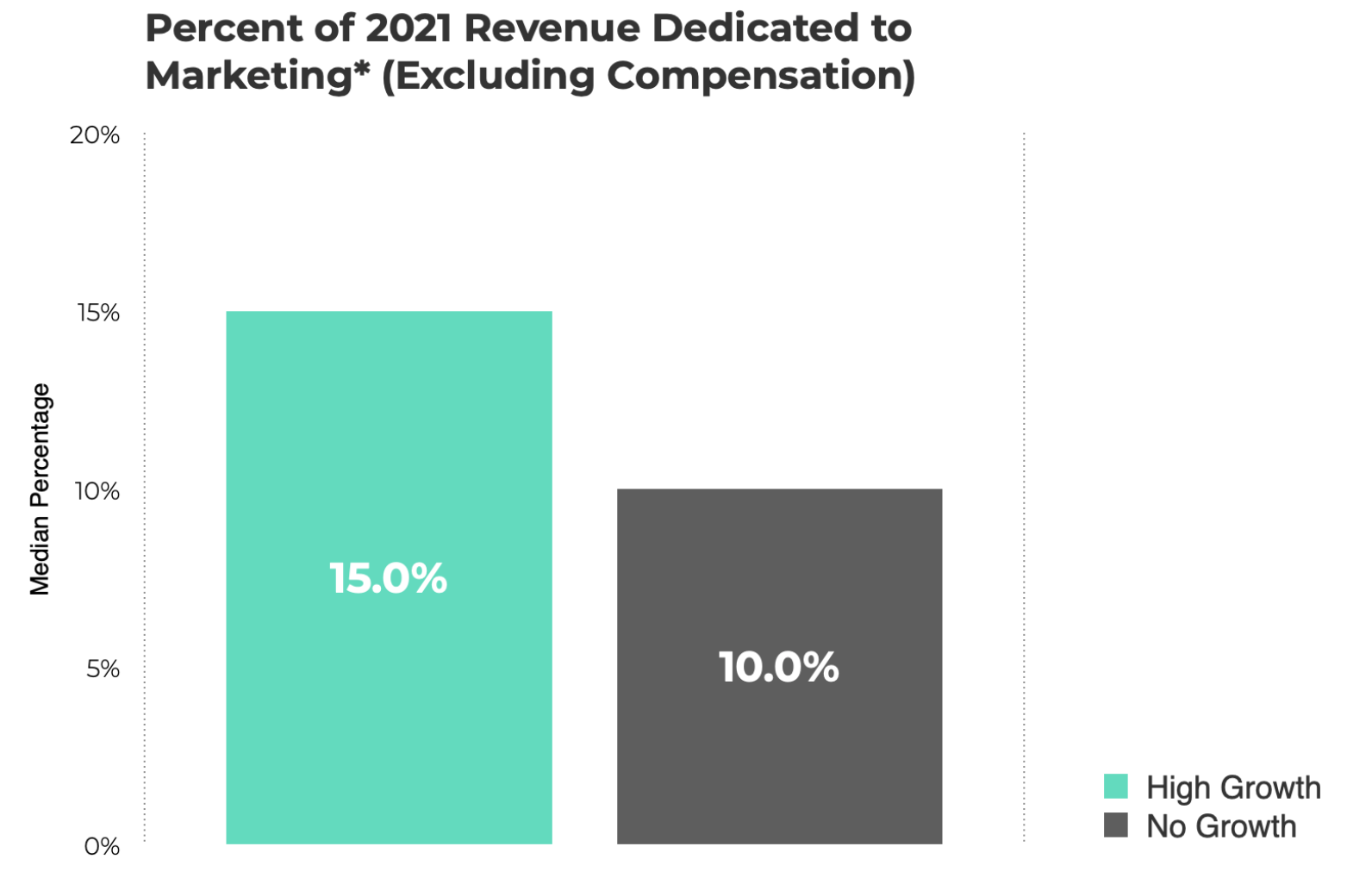
Marketing technology & automation is the top priority for 30% of A&FS High Growth firms, while it was identified by only 20.8% of No Growth firms. Without the proper tools in place to manage business development and quantify and track results, the No Growth firms will continue to trail.
The High Growth firms plan to invest in content creation—building a foundation that will continue to elevate their online visibility and expertise. No Growth firms are playing catch-up with social media, website performance, and brand differentiation.
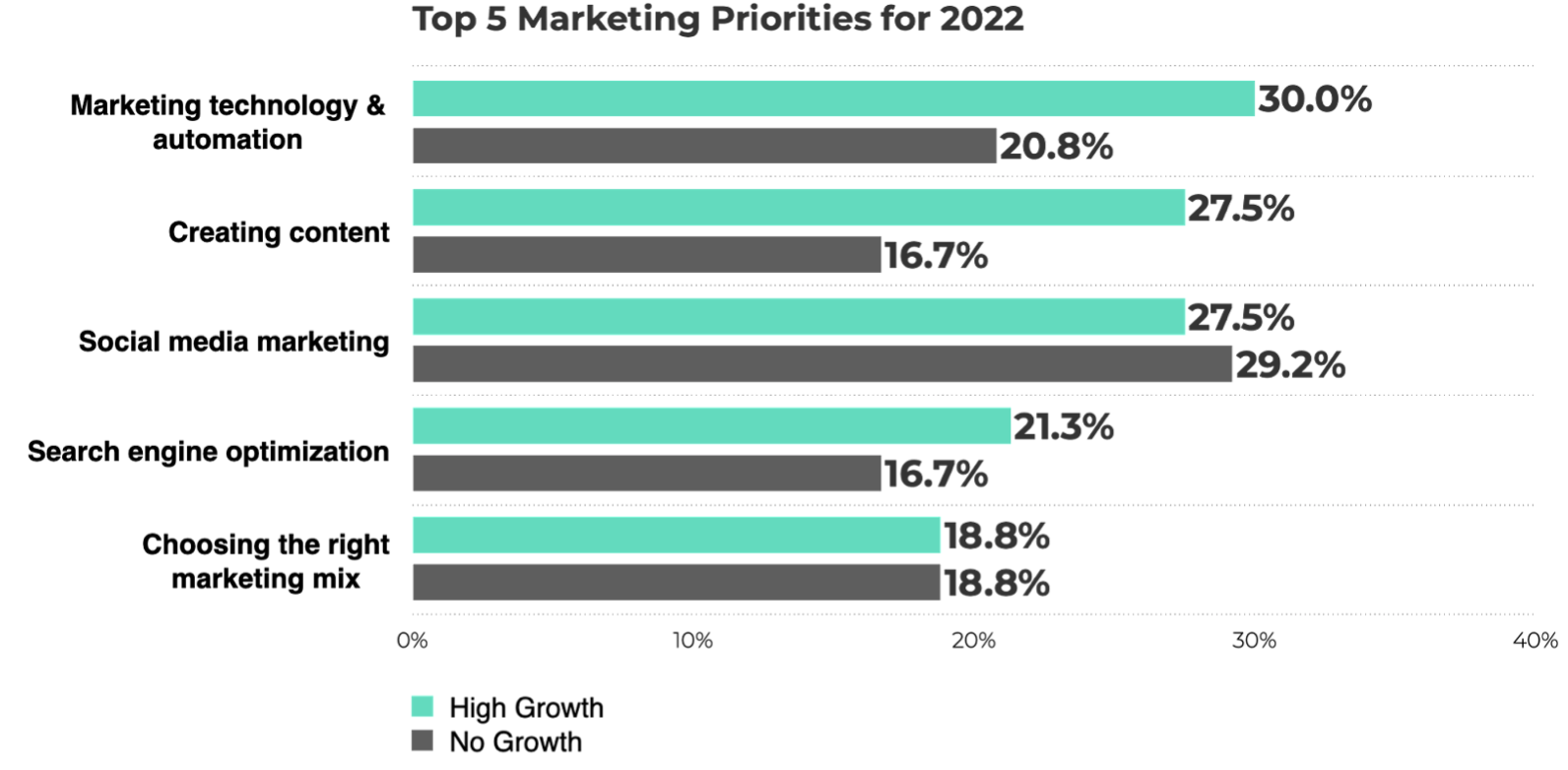
When we look at the top 10 most impactful techniques, we notice something interesting. High Growth firms get a much greater impact from three specific techniques that are relatively overlooked by No-Growth firms: public relations (earned media), keyword research/search engine optimization (SEO), and networking at targeted conferences, trade shows, and events.
While many A&FS firms use SEO, an overwhelming majority (42.9%) are operating at a very low level of maturity. Only 27.8% report a high level of SEO maturity. Increasing the level of SEO maturity provides companies an opportunity to gain a competitive advantage.
Key Advantage 4: STRATEGY
High Growth firms identify a different set of anticipated challenges over the coming years. They want to expand skill sets and increase automation, while their No Growth counterparts are more concerned with finding talent and managing a remote workforce.
With an eye on managing change and responding to unpredictability in the marketplace, High Growth firms may be better prepared to pivot and adjust if the need arises.

Where are High Growth firms focused next? High Growth firms are focused primarily on the future and technology issues, such as data and analytics, AI, cybersecurity, and workflow automation. No Growth firms are still working on developing their strategy.
A Final Thought
While uncertainty hasn’t gone away, neither has the opportunity for growth and profitability. So, where are A&FS firms finding success?
By accelerating the adoption of new technologies and investing in specific marketing techniques that generate the greatest impact, High Growth firms are becoming more digitally mature—and gaining greater visibility to inform smart business decisions. High Growth firms are also creating hybrid solutions by outsourcing highly specialized skills and partnering for industry marketing expertise.
One immediate challenge for firms as the war for talent continues will be the ability to recraft their corporate cultures. Attracting and retaining the most talented individuals will require authenticity of the employer brand and a demonstrated commitment to shared values, work-life balance, and opportunities for meaningful career advancement.

